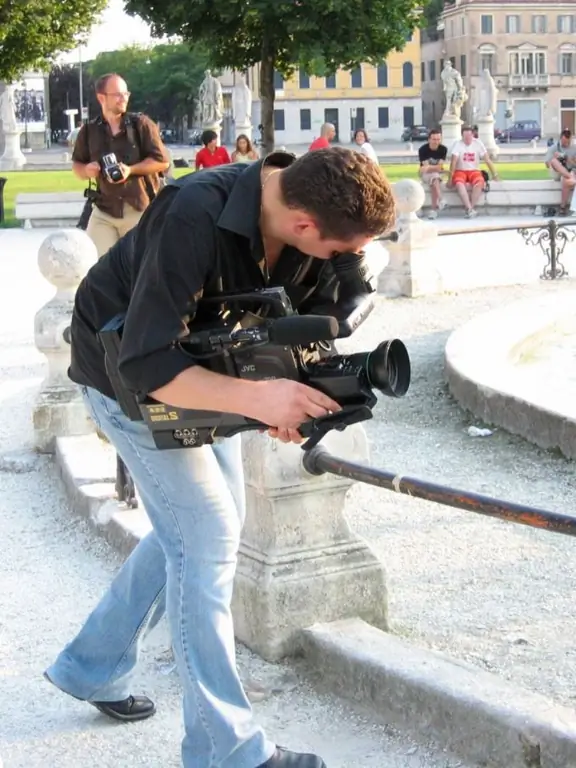Amateur video cameras have become available to the average citizen of our country due to the rapid development of technology. But here's the bad luck: a high-quality camera was bought, but there was no shooting skill. Often, an amateur video of an inept cameraman is a set of eventless footage with a shaking hand with a blurry picture and inappropriate off-screen comments.

It is necessary
Camcorder, tripod
Instructions
Step 1
If this is the first experience of video work, for a start, limit yourself to shooting a minor family ceremony, you should not immediately take commercial orders for wedding films and proms. In the conditions of home shooting, the requirements for you will be minimal, there will be no nagging about minor flaws. In addition, this is a great opportunity to develop your skills, master a video camera, and get your hands on it.
Step 2
Learn to hold your camcorder. Use a tripod whenever possible. Even experienced camera operators may have slight shaking in their hands, especially when holding the camera for a long time. If it is impossible to use a tripod under some conditions, heed the advice of television operators: take the video camera, for example, in your right hand, and position your left so that it serves as a support for the right, either under the elbow or below. The main thing is to achieve the absence of twitching of the video image, which even the options of modern cameras sometimes cannot smooth out. Jitter is especially noticeable when using the zoom. By the way, it is for this reason that experienced operators rarely use this function, zoom (remember feature films).
Step 3
The choice of the composition of the frame is a special science. More often than not, amateur filmmakers do not know how to do this. As a result, one can observe a sad picture when the subject's arms, torso and even head are cut off. Try not to leave anything important behind the scenes - parts of the person's body, part of the subject, the main event. When shooting close-ups, for example, a person's face, do not leave the chin and forehead behind the visibility zone, and the edges of the frame should "frame" the head. When shooting in profile, make sure that there is more space in front of the person's face than behind the head.
Step 4
Never shoot against the sun or bright light. Combine the video from different angles: close-up, wide shot, camera at shoulder level, shooting from above. To do this, stop the video recording in order to move to another part of the hall, room or street. If, for example, you are filming two people talking, do not try to keep both in the frame at all times. Capture the speaker at the moment, then redirect the camera to another so as not to miss his reaction and response.
Step 5
Take a closer look at any film or TV coverage of journalists. The camera is rarely in motion. Basically, the technique of switching between cameras is used, and the shooting is carried out from different places. And only by the idea of the director, who seeks to show the picture through the eyes of an actor, the movements of the camera can repeat the walking or running of the hero. It is better for a novice director not to get carried away with shooting in motion.






